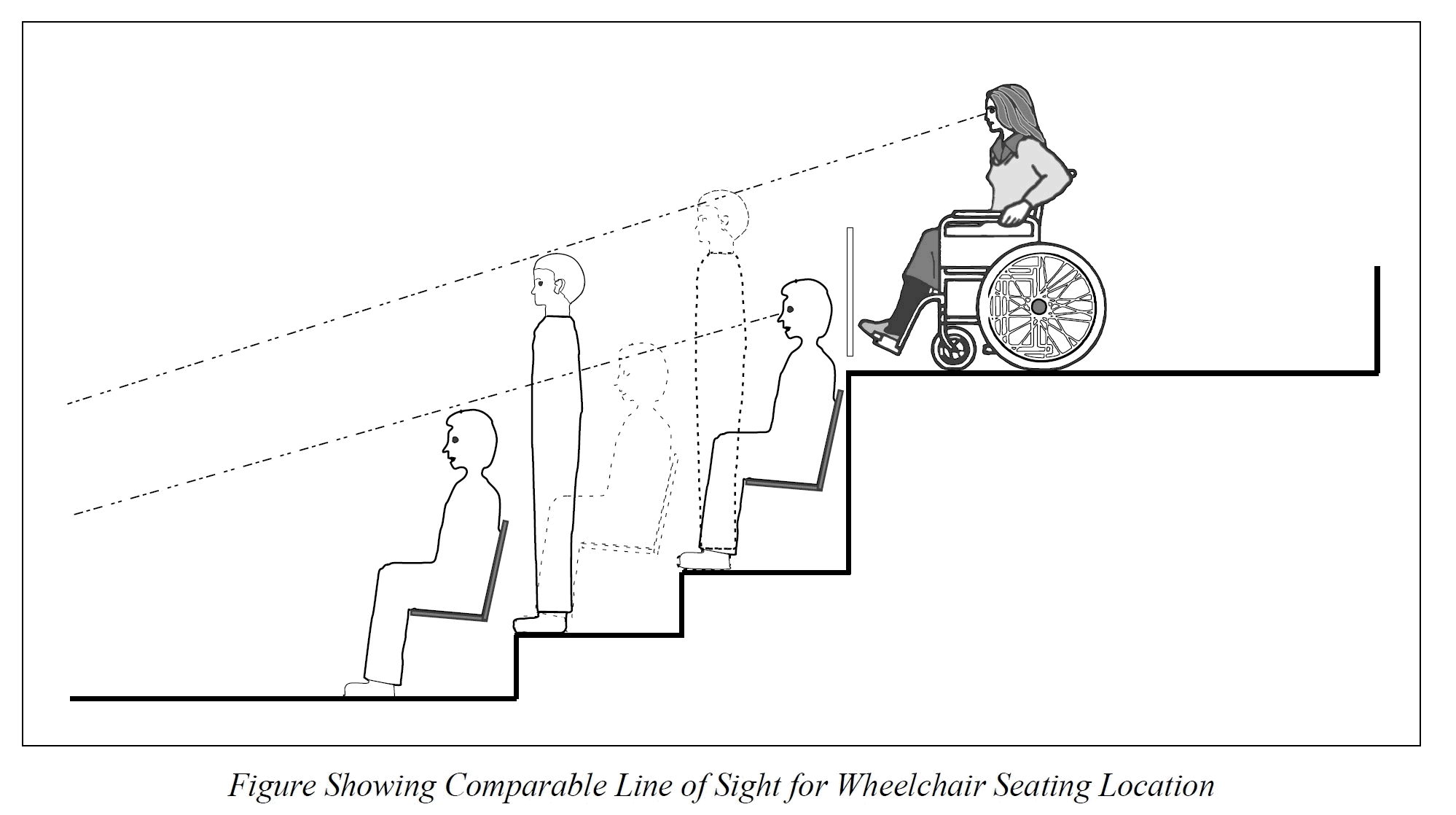Key Features of Accessible Stadiums
• Wheelchair accessible seating is required. At least one percent of the seating must be wheelchair seating locations. Each wheelchair seating location is an open, level space that accommodates one person using a wheelchair and has a smooth, stable, and slip-resistant surface.
• Accessible seating must be an integral part of the seating plan so that people using wheelchairs are not isolated from other spectators or their friends or family.
• A companion seat must be provided next to each wheelchair seating location. The companion seat is a conventional seat that accommodates a friend or companion.
• Wheelchair seating locations must be provided in all areas including sky boxes and specialty areas.
• Removable or folding seats can be provided in wheelchair seating locations for use by persons who do not use wheelchairs so the facility does not lose revenue when not all wheelchair seating locations are ticketed to persons who use wheelchairs.
• Whenever more than 300 seats are provided, wheelchair seating locations must be provided in more than one location. This is known as dispersed seating. Wheelchair seating locations must be dispersed throughout all seating areas and provide a choice of admission prices and views comparable to those for the general public.
• Wheelchair seating locations must be on an accessible route that provides access from parking and transportation areas and that connects to all public areas, including concessions, restaurants, rest rooms, public telephones, and exits.
• Wheelchair seating locations must provide lines of sight comparable to those provided to other spectators. In stadiums where spectators can be expected to stand during the show or event (for example, football, baseball, basketball games, or rock concerts), all or substantially all of the wheelchair seating locations must provide a line of sight over standing spectators. A comparable line of sight, as illustrated in the figure below, allows a person using a wheelchair to see the playing surface between the heads and over the shoulders of the persons standing in the row immediately in front and over the heads of the persons standing two rows in front.

• In addition to wheelchair seating locations, at least one percent of all fixed seats in all seating areas must be aisle seats with no armrest, or with a removable or folding armrest, on the aisle side. These seats accommodate people who have a mobility disability but who wish to use a seat that is not a wheelchair seating location.
• An accessible route must connect the wheelchair seating locations with the stage(s), performing areas, arena or stadium floor, dressing or locker rooms, and other spaces used by performers.
Concessions
• All concessions, including food service areas, restaurants, and souvenir stands, must be accessible. For example, lowered counters must be provided where goods are provided and where cash registers are located. Condiments and self-serve food items must be provided within reach of a person using a wheelchair.
• An accessible route must provide access to all public and common use areas including the playing field, locker rooms, dugouts, stages, swimming pools, and warm-up areas. The accessible route provides access for the public, employees, and athletes using the facility.
Assistive Listening Systems.
When audible communications are integral to the use of a stadium, assistive listening systems are required for people who are hard of hearing. These systems amplify sound and deliver it to a special receiver that is worn by the spectator, or to the spectator’s hearing aid, depending on the type of system that is used.
• The stadium must provide receivers for the assistive listening system. The number of available receivers must equal four percent of the total number of seats.
• Signs must be provided to notify spectators of the availability of receivers for the assistive listening system.

User Comments/Questions
Add Comment/Question